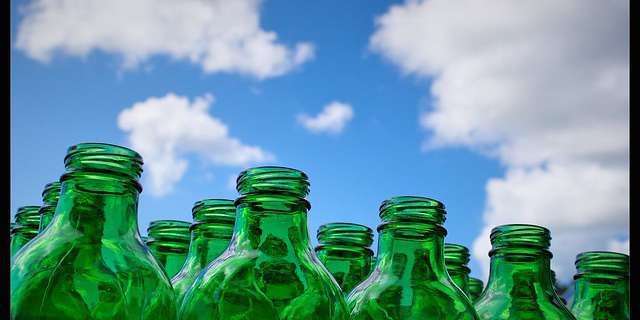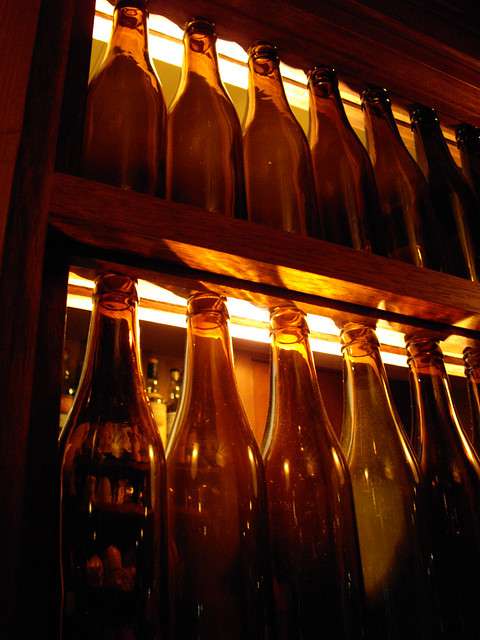
Green beer bottles have a refreshing appeal. Image credit: Flickr user Neil Tackaberry
When I was in college, my friends would always buy green colored beer bottles, believing that these were fancier and more “European-looking” than their brown colored peers. But after graduation, I started drinking more porter, which usually came in dark brown bottles. After years of drinking dark porters and stouts, I went back and tried a few of the green colored bottles that I used to love as a college student — the beer wasn’t at all to my liking. It had a strong musty aftertaste that I don’t remember tasting when I was 21 years old.
It turns out that beer bottle colors1 have a significant impact on the flavor of the liquid inside. Even when the beer is of similar quality and made in the same style (like porter or lager), the flavors will change dramatically depending on the bottle color. Using a spectrophotometer to measure the color of the bottle can help breweries protect the natural flavors of the beer inside, and find the perfect glass opacity for the beer’s style.
Why Beer Bottle Color Matters
If you’ve ever noticed a musty, skunky aftertaste in your beer, chances are good that ultraviolet light is responsible. That’s because beer contains hops, a dried flower that provides a hint of aroma and bitterness. One set of chemicals inside of hops, isohumulones2, interact with UV light to produce a chemical compound that’s nearly identical, on the molecular level, to the stinky spray that skunks use to ward off predators. The more hops a beer has, and the more UV light interacts with those hops, the stronger the scent of skunk will be. While this isn’t harmful to your health, it can make for an unpleasant drinking experience.
That’s where bottle color comes in handy. Some colors are specifically designed to absorb UV light before it can interact with the liquid inside, whereas others offer little to no protection. Generally, clear, yellow or green bottles cannot protect the beer from UV light, whereas dark brown bottles can. The darker and more opaque the bottle is, the less UV light can enter, which preserves the natural flavors of the beer.



